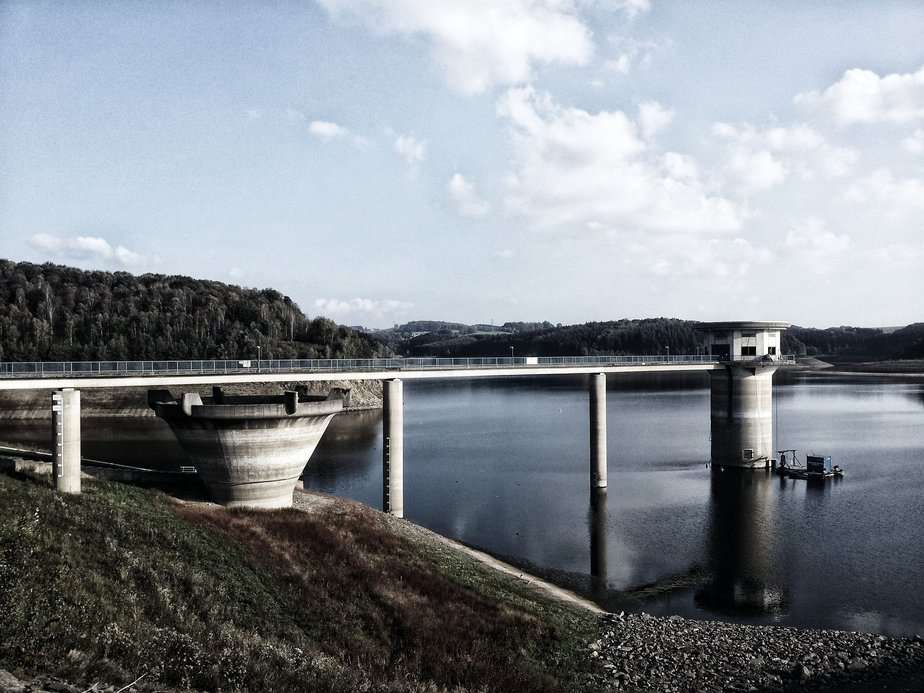
The ten largest dams in the world showcase the remarkable achievements of engineering and the importance of water management in modern society.
Dams are engineering marvels that have been vital to human civilization for centuries. They serve various purposes, from flood control to water supply and hydroelectric power generation. In this blog post, we will embark on a journey to discover the ten largest dams in the world. These massive structures stand as a testament to human ingenuity and our ability to harness the power of water for the benefit of communities and nations.
Three Gorges Dam, China
Location: Yangtze River, China
Height: 181 meters (594 feet)
Length: 2,335 meters (7,661 feet)
Capacity: 22,500 MW (megawatts)
The Three Gorges Dam is the largest dam globally, both in terms of height and power generation capacity. It’s a colossal structure on the Yangtze River, serving flood control, electricity generation, and navigation.
Itaipu Dam, Brazil/Paraguay
Location: Paraná River, Brazil/Paraguay
Height: 196 meters (643 feet)
Length: 7,919 meters (26,245 feet)
Capacity: 14,000 MW
The Itaipu Dam is a binational project between Brazil and Paraguay. It ranks as one of the largest hydroelectric power plants in the world and provides a significant portion of both countries’ electricity needs.
Xiluodu Dam, China
Location: Jinsha River, China
Height: 285.5 meters (937 feet)
Length: 700 meters (2,297 feet)
Capacity: 13,860 MW
Xiluodu Dam is another impressive feat of Chinese engineering. Located on the Jinsha River, it contributes substantially to China’s renewable energy production.
Guri Dam, Venezuela
Location: Caroni River, Venezuela
Height: 162 meters (531 feet)
Length: 1,300 meters (4,265 feet)
Capacity: 10,235 MW
Guri Dam is a crucial component of Venezuela’s power generation infrastructure. It has played a vital role in providing electricity to the nation.
Tucuruí Dam, Brazil
Location: Tocantins River, Brazil
Height: 78 meters (256 feet)
Length: 12,750 meters (41,833 feet)
Capacity: 8,370 MW
The Tucuruí Dam, situated on the Tocantins River, is one of Brazil’s major hydroelectric facilities. It has been instrumental in the country’s energy production and industrial development.
Grand Coulee Dam, United States
Location: Columbia River, United States
Height: 168 meters (550 feet)
Length: 1,592 meters (5,223 feet)
Capacity: 6,809 MW
The Grand Coulee Dam, located in the state of Washington, is a massive structure on the Columbia River. It serves irrigation, flood control, and electricity generation purposes.
Bakhtegan Dam, Iran
Location: Bakhtegan Lake, Iran
Height: 150 meters (492 feet)
Length: 230 meters (755 feet)
Capacity: 3,000 MW
Bakhtegan Dam is a relatively newer addition to the list of the world’s largest dams. It is located on Bakhtegan Lake and plays a vital role in Iran’s energy infrastructure.
Bratsk Dam, Russia
Location: Angara River, Russia
Height: 125 meters (410 feet)
Length: 4,417 meters (14,491 feet)
Capacity: 4,515 MW
The Bratsk Dam is a massive hydroelectric facility in Siberia, Russia. It was one of the first dams built on the Angara River and remains a significant source of power in the region.
W.A.C. Bennett Dam, Canada
Location: Peace River, Canada
Height: 186 meters (610 feet)
Length: 2,068 meters (6,785 feet)
Capacity: 2,919 MW
Situated on the Peace River in British Columbia, Canada, the W.A.C. Bennett Dam is a crucial part of the province’s hydroelectric network, supplying clean energy to residents and industries.
Hoa Binh Dam, Vietnam
Location: Black River, Vietnam
Height: 128 meters (420 feet)
Length: 970 meters (3,182 feet)
Capacity: 1,920 MW
The Hoa Binh Dam is the largest hydroelectric dam in Vietnam and plays a significant role in the country’s power generation and flood control efforts.
Conclusion
From China’s Three Gorges Dam, a symbol of power and progress, to the binational cooperation of the Itaipu Dam in South America, each of these structures plays a vital role in their respective regions, providing electricity, flood control, and water resources.
Dams not only represent human mastery over nature but also highlight the need for sustainable development and responsible environmental stewardship. As we continue to grapple with global challenges like climate change and increasing energy demands, the role of dams in our world will likely become even more significant.
More reading
Evaporation Balls: What Are They And How Do They Work

Pingback: The 10 Worst Dam Disasters In History | Big Ditch Dam Building Company